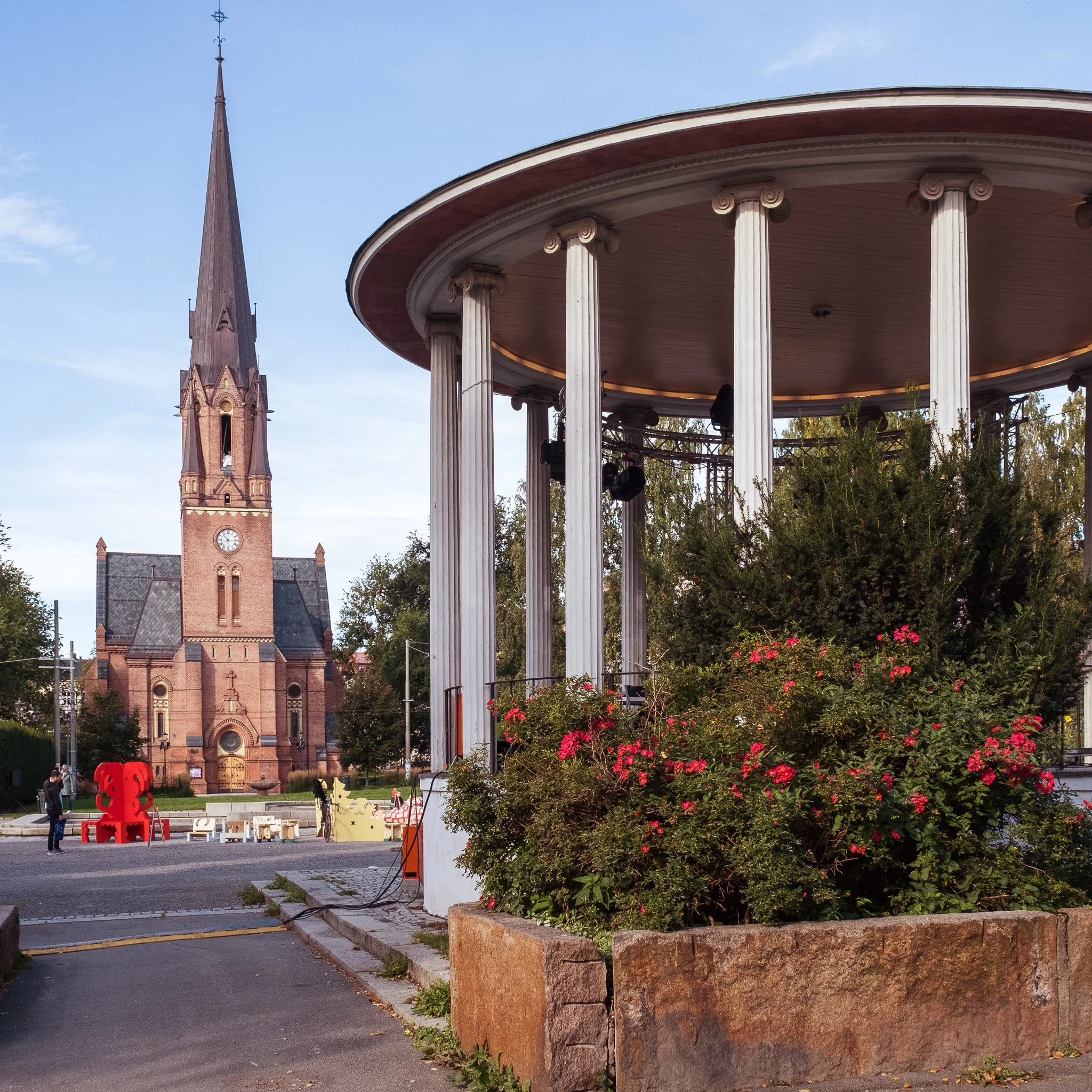Grünerløkka
Oslo, Norway
Music pavilion at Brikelunden is pictured, with St. Paul's Church in the background. The brick, Neo-Gothic style church was inaugurated in 1892. The current pavilion was erected in 1926 and replaced a smaller roofed pavilion from the 19th-century planning of the area. Today, the pavilion is regularly used for public gatherings, concerts, and neighbourhood festivals. Birkelunden is one of three large public squares in the Grünerløkka district. The square is the site of a bustling second-hand market year-round.
Despite being one of the most densely populated of Oslo's districts, Grünerløkka has many parks and open green areas, such as Tøyen Park, the Botanical Gardens, and Nedre Foss Park. The restoration and enhancements of the greenbelt along the river Akerselva have greatly expanded the open areas used by people throughout the city.
Grünerløkka
The Grünerløkka district is in inner east Oslo, with most of the district on the east side of the river Akerselva.
Grünerløkka is the name of the bydel and also of a neighbourhood area in the district, reflecting overlapping designations and identities of The City's districts and neighbourhoods. The area has a long history and exciting contemporary developments. Nedre Foss Gård, for example, dates to the 13th century when it belonged to the Hovedøya Monastery.
Today, this prominent landmark is part of a wholly transformed area of commercial and residential developments and institutions centred on culture-related activities.
Known as a workers' district, Grünerløkka is the site of a concentration of Oslo's early industrialization. Recent developments have made Grünerløkka the most populous district in Oslo, surpassing Frogner in 2017. Walking paths along the river Akerselva connect many former industrial sites with small, picturesque parks. Many neighbourhoods are marked by innovative contemporary architecture integrated into repurposed industrial structures, harkening to its current fashion and industrial past.
The district is enjoyed by denizens and visitors for its vibrant street art, bars and cafes, clubs, and event venues. Indie boutiques showcase design and vintage fashions, while weekend markets transform neighbourhood squares into bustling hubs of gastronomic delights, markets for antiquities, and intriguing curios.






















































